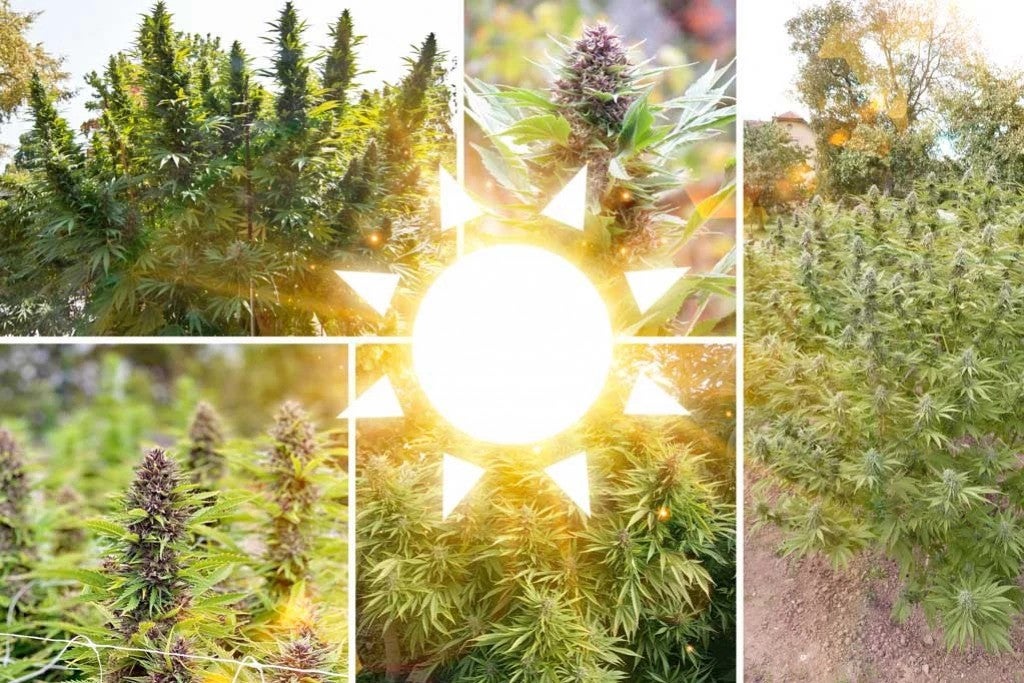
Limited Time Only - FREE SHIPPING ON ALL ORDERS!!!
ACMPR Wholesale Orders "Click Here"
All Orders Arrive in 1 week

Choosing the right location for your outdoor cannabis garden is one of the most critical decisions you’ll make when embarking on the journey of cultivation. The success of your cannabis plants depends heavily on their environment, including factors like sunlight exposure, soil quality, water drainage, and protection from pests and other environmental stressors. In this comprehensive guide, we’ll explore how to plant with purpose by selecting the ideal location for your outdoor cannabis garden this spring, ensuring optimal growth, health, and yield.
Understanding Sunlight Requirements: Cannabis plants thrive in full sunlight, requiring at least 6 to 8 hours of direct sunlight per day for optimal growth and development. When choosing a location for your outdoor cannabis garden, prioritize areas that receive ample sunlight throughout the day, such as south-facing slopes, open fields, or areas with minimal shading from trees, buildings, or other structures. Avoid planting cannabis in areas with excessive shade or partial sunlight, as this can result in stunted growth, poor flowering, and reduced yield.
Assessing Soil Quality: Soil quality plays a crucial role in the health and productivity of your cannabis plants. Before planting, assess the soil quality in potential garden locations by conducting a soil test to measure pH, nutrient levels, and texture. Look for well-draining, loamy soil with a pH level between 6.0 and 7.0, as this provides an ideal growing environment for cannabis. Avoid areas with compacted or waterlogged soil, as this can lead to poor root development, nutrient deficiencies, and other issues that may impact plant health and yield.
Considering Water Drainage: Proper water drainage is essential for preventing waterlogged soil and root rot, which can be detrimental to cannabis plants. When selecting a location for your outdoor cannabis garden, choose areas with good water drainage, such as sloped or elevated terrain, sandy or loamy soil, or areas with natural drainage channels. Avoid low-lying areas or areas prone to flooding, as excess moisture can suffocate roots and promote the growth of mold, mildew, and other pathogens.
Protecting from Pests and Environmental Stressors: Cannabis plants are susceptible to a variety of pests, diseases, and environmental stressors that can impact growth and yield. When choosing a location for your outdoor cannabis garden, consider factors such as proximity to wildlife habitats, exposure to wind or extreme weather conditions, and access to natural predators or beneficial insects. Planting cannabis near companion plants, such as marigolds, basil, or lavender, can help repel pests and attract beneficial insects, creating a more balanced and resilient garden ecosystem.
Maximizing Privacy and Security: Privacy and security are important considerations when choosing a location for your outdoor cannabis garden, especially if you live in an urban or densely populated area. Look for secluded or enclosed areas that provide privacy from neighbors, passersby, and potential thieves. Consider installing fencing, barriers, or security cameras to deter trespassers and protect your plants from theft or vandalism. Additionally, be mindful of local regulations and zoning laws governing outdoor cannabis cultivation, and take steps to comply with any applicable restrictions or requirements.
Creating Microclimates: Microclimates are localized climate conditions that can vary within a relatively small area, influenced by factors like topography, elevation, and proximity to water sources. When choosing a location for your outdoor cannabis garden, consider creating microclimates to maximize growth and yield. Planting cannabis near large rocks or thermal masses can help absorb and radiate heat, creating warmer microclimates that extend the growing season and promote faster growth. Similarly, planting cannabis near water features or natural water sources can help regulate temperature and humidity, creating more favorable growing conditions for your plants.
Read More:
How to Dry, Cure and Store Cannabis Flowers
What are Fast Version Cannabis Strains?
Organic Fertilizers VS Mineral Fertilizers – Which is Better?